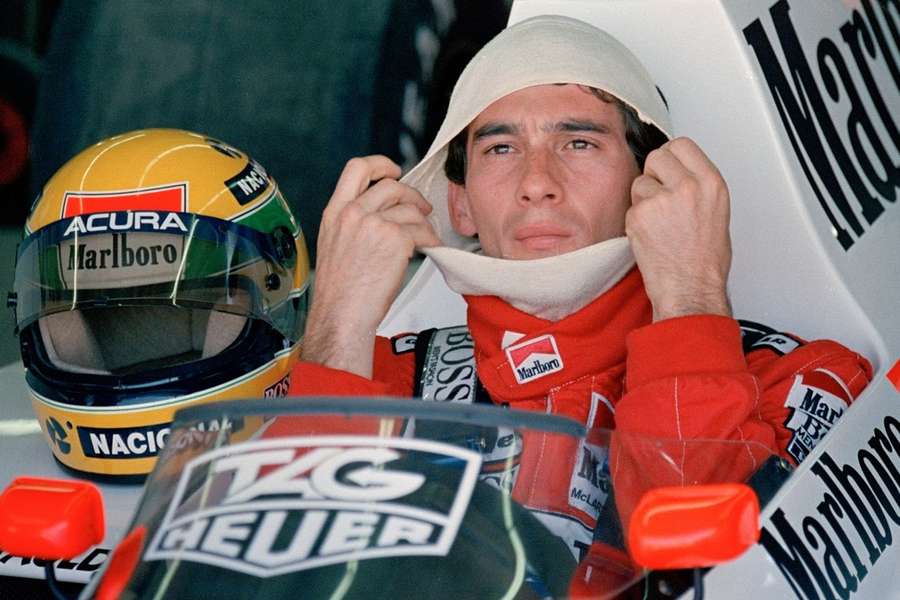30 years after his death, the unforgettable Ayrton Senna lives on more than ever

"Every lap is a battle and to win it I have to give 100%. It's in my nature to always push harder."
Many stories are told after the death of great men. But the more time passes, the more they fade away. Not that of Ayrton Senna, however; a striking driver, three-time World Champion between 1988 and 1991, the unfortunate victim of the cursed weekend of May 1st 1994. The Brazilian is still adored, if not more so than when he was alive. An astonishing fact that accentuates his mystical and legendary aura all the more.
San Marino 1994: A sinister weekend
The 1994 Imola (or San Marino) Grand Prix was the first European race of the season. Michael Schumacher won the race on Sunday, May 1st, but this detail was overshadowed by the various tragedies that occurred throughout the weekend.
The 'Enzo e Dino Ferrari', a circuit already infamous for a number of incidents, including those involving Gerhard Berger, Michele Alboreto, Nelson Piquet, Gilles Villeneuve and Jody Scheckter, saw horror unfold on its track in the space of three days.
First, there was Rubens Barrichello's accident during free practice on Friday, then Roland Ratzenberger's crash at the Villeneuve curve and his death on Saturday, and finally the collision between Senna's car and the wall at the Tamburello curve on Sunday.
Live on television, Formula 1 spectators witnessed the tragic accidents, just as the drivers did over the weekend. According to current Ferrari team principal Frederic Vasseur, recently interviewed by AFP, they were: "Three big crashes (...) and I think that shocked F1."
In his book L'icône immolée, recently published by En exergue and written in the first person, French journalist Lionel Froissart looks in part at Senna's reaction and feelings about these incidents.
In it, the Brazilian, deeply affected by the death of his Austrian friend Ratzenberger, recalls "a desire to get away from Imola and the absolute necessity to be at the start." It's a clear sign of the driver who, at the time, said that danger didn't frighten him.
Also in the book, the author refers to the difficulties that Senna had been facing with his Williams car since the start of the year. "I don't feel comfortable in it, I don't feel confident. It's very difficult to drive and control. It's an unpredictable, vicious machine." And it got the better of him when part of his suspension came loose and pierced his helmet. It was a death that left an indelible mark on the world of Formula 1.
Motorsport and its dangers
Even 30 years on, his death is a reminder that motorsport is not without risk. Accidents have always happened since the emergence of the sport, and they will continue to happen. But before that famous weekend at Imola, Gilles Villeneuve's fatal incident at Zolder (1982) was the only one that remained clearly in the minds of the crowds.
Senna's accident (and Ratzenberger's more generally) reignited debates about safety and circuit layouts. "After his accident, the FIA took measures. But the big changes really came after Monaco '94, when Karl Wendlinger was put into a coma following another incident," says Froissart.
"There's no doubt that Ayrton's accident, the superstar of the time, was a trigger, and after that, safety never stopped being reinforced."

The Imola circuit itself has been reexamined. In his book, Froissart explains that Senna had already considered this option.
"And there we made the same observation: behind the Tamburello wall the Santerno river flows not far away and it was therefore impossible to move the wall back to create a larger run-off to slow down a car in distress. Worried and disappointed, Gerhard and I left the area."
However, after the death of the Brazilian, the entire layout was revised, and new curves and chicanes were introduced. In the case of the Tamburello bend, this allowed the cars to slow down so as not to be in the path of the wall. Other measures led to changes in the design of the single-seaters to improve safety.
Proof that even in extra-sporting activities, Senna more or less deliberately left an indelible mark.
A legacy that transcends generations
In the history of the sport, there have been a multitude of records broken. Schumacher and Lewis Hamilton both have seven world titles to their name, Max Verstappen has the most wins in a single year, and Fernando Alonso has the most race starts. So why, with his 41 wins and 65 poles, does Senna still stand out from the crowd to the point of being as adulated as he was on his first day?
Froissart is the first to be surprised: "It's very surprising, there's always a moment when people refer to him. He had a very strong personality, a sensitivity that touched people beyond his record of achievements. We remember above all what he showed in a car, his determination."
And for that, he is still admired. All over the world, motorsports fans still pay tribute to him or mention him in conversation. Even bigger, some wear T-shirts bearing his image, or still strut around with replicas of his helmet at Interlagos or other circuits. Elevated to the rank of national hero in his own country, he retains an idol status, characterised by pilgrimages to his tomb.
On a more sporting level, too, he was the idol of quite a few drivers. Hamilton and Alonso have never hidden their admiration for him. Other drivers of the new generation, such as Charles Leclerc and Pierre Gasly, also devote a great deal of adoration to him and have already visited the Senna Foundation.
So the Brazilian has influenced more people than he could ever have imagined, to such an extent that even thirty years after his departure, he continues to be present and remembered. Yet further proof that he belongs amongst the greats.
